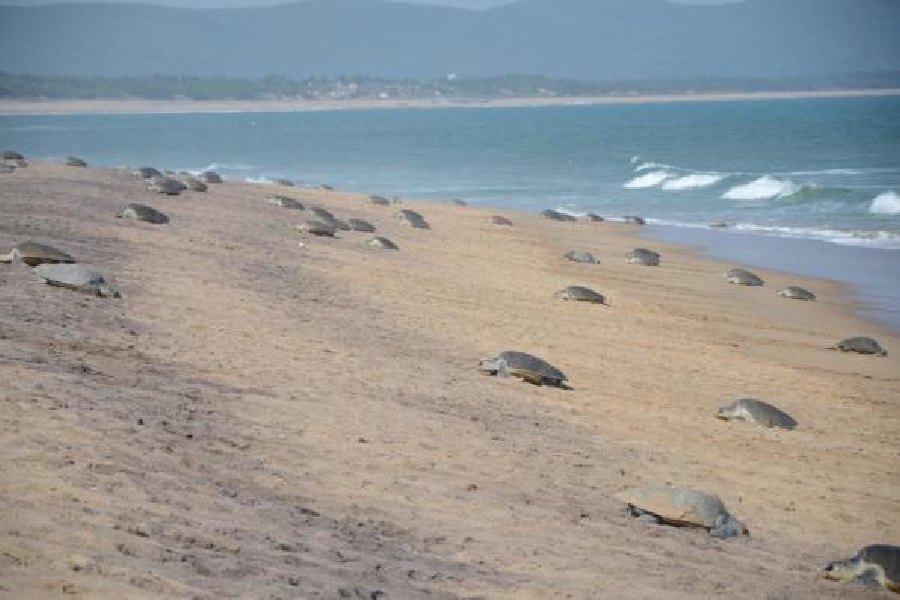For 60 years, Baltazar Ushca worked a rare but rigorous trade: ice merchant. Once or twice a week, he climbed snow-capped Mount Chimborazo, Ecuador’s highest peak, to hack ice from a glacier with a pickaxe, wrap the 27kg blocks in hay and transport them on the backs of his donkeys. He would then sell them to villagers who did not have electricity and needed refrigeration to conserve their food.
It started as a family business. Ushca’s father, Juan, was an ice merchant, as were his brothers, Juan and Gregorio, and they made their very modest livings off the Chimborazo ice.
But Ushca, who was 4-foot-11, chipped at the ice decades after modern refrigeration came to his village, by which time his job was nearly obsolete. He gradually became known as the last of his breed, selling his blocks of ice for a few dollars each largely to vendors in a market in Riobamba, Ecuador, for use in fruit drinks and making ice cream.
“The natural ice from Chimborazo is the best ice,” Ushca said in a short documentary, El Último Hielero, or The Last Ice Merchant (2012), directed by Sandy Patch. “The tastiest and the sweetest. Full of vitamins for your bones.”
Once he reached the market, he delivered the blocks of ice by carrying them on his back.
“My kids would say, ‘Why suffering so much?’” Gregorio Ushca said the documentary. “‘Being so cold, walking far, if you almost make no money?’”
Since he was 15, Baltazar Ushca has harvested the glacial ice of Ecuador’s Mount Chimborazo. His brothers have long since retired. El Último Hielero is a story
of cultural change and adaption.
Baltazar Ushca was aware of the dangers of his trade, in which “rocks can fall from above all of a sudden”, he said, adding a touch of fatalism.
“Because we are poor,” he said, “we live working until God will take us.”
But the perils of his job did not end his life. Rather, he died on October 11 in Riobamba of injuries caused when a bull “overpowered him and threw him to the ground” while he was herding cattle, the municipality of Guano in central Ecuador, where he lived, said in a statement. He was 80.
“He is a national treasure in Ecuador,” said Patch, who brought Ushca and his daughter Carmen to New York in 2012 for the premiere of his documentary at the Tribeca Film Festival, where they answered questions from the audience. “Everyone knows who he is. He’s been in the news and brought attention to Ecuador.”
As his renown spread through newspaper articles and a few films, Ushca occasionally earned extra money by taking tourists to watch him harvest ice, Patch said in an interview. But after a foot injury ended his mountain work about five years ago, Ushca spent time as a guide at the city museum in Guano.
Baltazar Ushca Tenesaca was born on May 12, 1944, in the village of Cuatro Esquinas, Ecuador. He began harvesting ice when he was 15 and continued until he was about 75.
“I am happy when I walk” the mountain, he told the BBC in 2012. “Father Chimborazo looks after me.”
But those treks grew longer and riskier as the Reschreiter glacier, the largest one on Chimborazo, has retreated by more than 1km since the 1980s because of climate change.
His ice-collecting journeys started in the early mornings from his home in Cuatro Esquinas and continued for several hours until he reached the glacier, an estimated 15,000 feet up Chimborazo, a dormant volcano with an elevation of 20,549 feet.
One workday in 2008, his several hours of toil yielded six blocks of ice, according to the Matador Network, a travel and adventure website.
And, the travel writer Jon Brandt said on that site, “once the dirt around them has been chiselled off, they are prepared one by one in the grass and wrapped up tightly. Each block takes about 10 minutes to wrap and load on the donkeys.”
Ushca is survived by his daughters, Carmen, Maria and Dolores; a son, Elias; six grandchildren; and his brother Gregorio. His brother Juan died around 2017. His wife, Maria, died in 2014.
After Ushca’s death, which was front-page news in a local newspaper, El Universo, Guano’s municipal council declared a three-day period of mourning.
And Humberto Carrasco Espinoza posted a poem on Facebook that read, in part:
And on the summit, its ice still preserved,
Is a witness of a faithful and strong man,
Who lived to the end without fearing death,
And in his mission, at last, he was elevated.
So long, Baltazar!
New York Times News Service











